What is FileEncrypted ransomware?
If you have found your files encrypted, it is very likely that the ransomware infection called FileEncrypted ransomware has entered your system and locked your files completely. Such threats lock all users’ files, usually, all media files, leaving only system files intact. FileEncrypted ransomware will not unlock them for you after some time. They will stay encrypted no matter what you do. In fact, there are no guarantees that they will be unlocked if you transfer a ransom to cyber criminals too. Malicious software developers promise to send the key that can unlock files to victims, but it often turns out to be a pure lie. That is, users get nothing from them. Do not be one of those users who pay money to cyber criminals for nothing – delete FileEncrypted ransomware from your computer instead right away so that this threat could not encrypt more files on your PC. 
What does FileEncrypted ransomware do?
The entrance of malicious software is silent, but this does not mean that users cannot find out about their entrance. Speaking about FileEncrypted ransomware, you will notice that your files have a new extension appended: [random_characters].FileEncrypted. It cannot be moved, but even if you could do that, your files would stay encrypted. Unfortunately, these files will stay locked even if you implement the FileEncrypted ransomware removal completely. The only way to get them back is to pay 1 Bitcoin to cyber criminals. As mentioned, there are no guarantees that they will be decrypted in this case as well. You cannot do much without the decryption tool, but if you have a backup, you are not doomed – you could restore your files with the click of a button. If you do not have a single copy of your files, you should wait until a free decryptor is released. We cannot promise that this will happen soon.
How did FileEncrypted ransomware enter my computer?
No doubt the entrance of FileEncrypted ransomware was completely secret, but we do not think that you have nothing to do with this. A bunch of users allow malicious software to enter their computers themselves. Of course, they know nothing about this. The majority of ransomware infections infiltrate users’ computers when malicious email attachments are opened, so this could have happened in your case as well. Alternatively, you could have downloaded this infection yourself from the web. In any event, make sure you uninstall FileEncrypted ransomware as soon as possible. If it stays, it might encrypt more files, and, additionally, download more harmful threats from the web without your knowledge.
How do I remove FileEncrypted ransomware from my PC?
You should remove FileEncrypted ransomware right away. There are two different ways to do this. You can either erase this malicious application yourself by deleting all its files manually, or you can simply scan your computer with an antimalware scanner. You should implement the FileEncrypted ransomware removal automatically if you do not have time or you are not a very experienced user. Make sure you delete FileEncrypted ransomware using a reliable antimalware scanner.
Offers
Download Removal Toolto scan for FileEncrypted ransomwareUse our recommended removal tool to scan for FileEncrypted ransomware. Trial version of provides detection of computer threats like FileEncrypted ransomware and assists in its removal for FREE. You can delete detected registry entries, files and processes yourself or purchase a full version.
More information about SpyWarrior and Uninstall Instructions. Please review SpyWarrior EULA and Privacy Policy. SpyWarrior scanner is free. If it detects a malware, purchase its full version to remove it.

WiperSoft Review Details WiperSoft (www.wipersoft.com) is a security tool that provides real-time security from potential threats. Nowadays, many users tend to download free software from the Intern ...
Download|more


Is MacKeeper a virus? MacKeeper is not a virus, nor is it a scam. While there are various opinions about the program on the Internet, a lot of the people who so notoriously hate the program have neve ...
Download|more


While the creators of MalwareBytes anti-malware have not been in this business for long time, they make up for it with their enthusiastic approach. Statistic from such websites like CNET shows that th ...
Download|more
Quick Menu
Step 1. Delete FileEncrypted ransomware using Safe Mode with Networking.
Remove FileEncrypted ransomware from Windows 7/Windows Vista/Windows XP
- Click on Start and select Shutdown.
- Choose Restart and click OK.

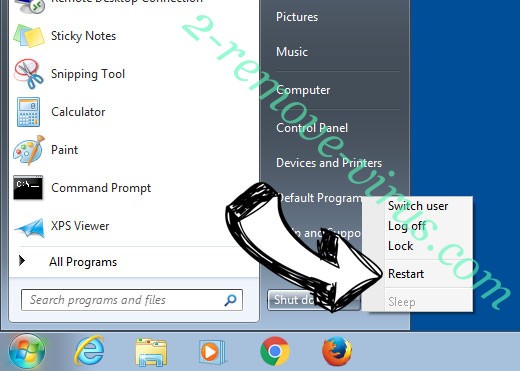
- Start tapping F8 when your PC starts loading.
- Under Advanced Boot Options, choose Safe Mode with Networking.


- Open your browser and download the anti-malware utility.
- Use the utility to remove FileEncrypted ransomware
Remove FileEncrypted ransomware from Windows 8/Windows 10
- On the Windows login screen, press the Power button.
- Tap and hold Shift and select Restart.

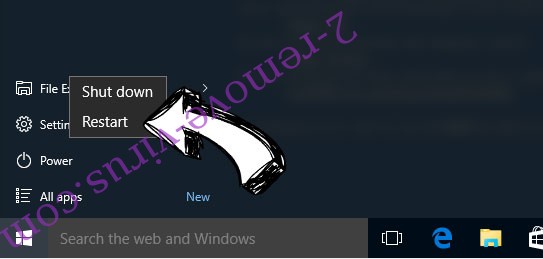
- Go to Troubleshoot → Advanced options → Start Settings.
- Choose Enable Safe Mode or Safe Mode with Networking under Startup Settings.

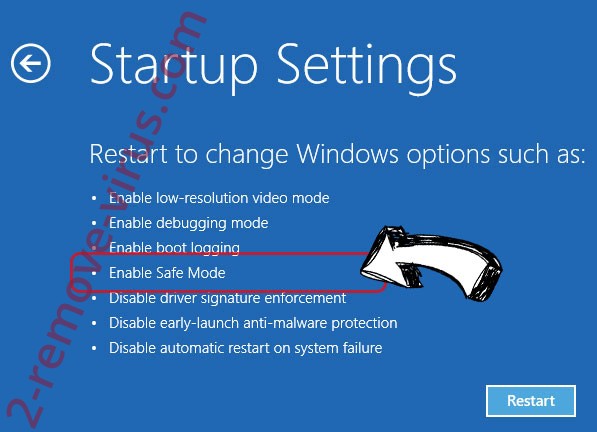
- Click Restart.
- Open your web browser and download the malware remover.
- Use the software to delete FileEncrypted ransomware
Step 2. Restore Your Files using System Restore
Delete FileEncrypted ransomware from Windows 7/Windows Vista/Windows XP
- Click Start and choose Shutdown.
- Select Restart and OK


- When your PC starts loading, press F8 repeatedly to open Advanced Boot Options
- Choose Command Prompt from the list.

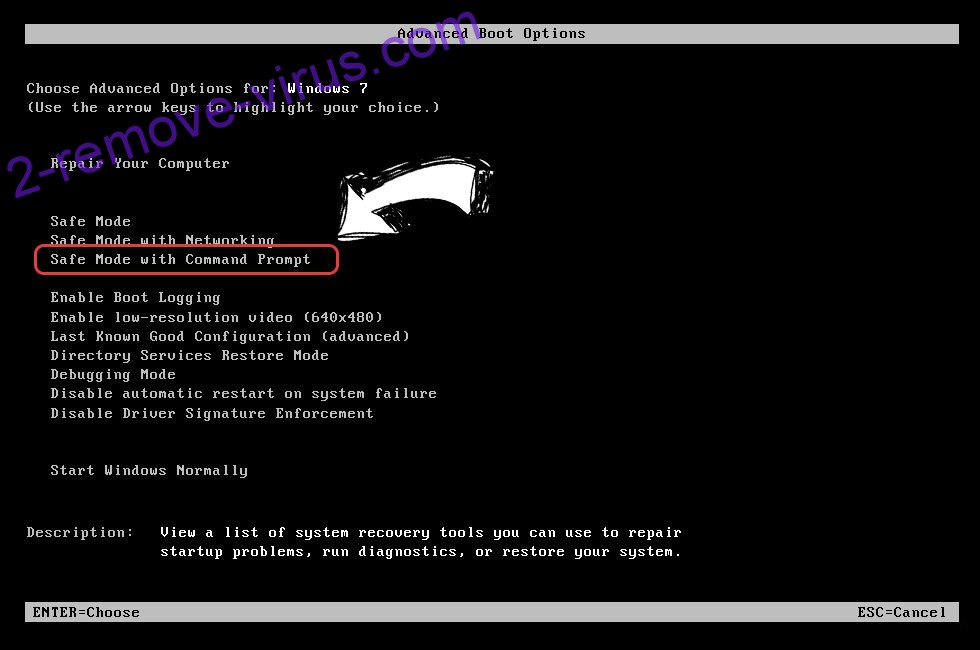
- Type in cd restore and tap Enter.

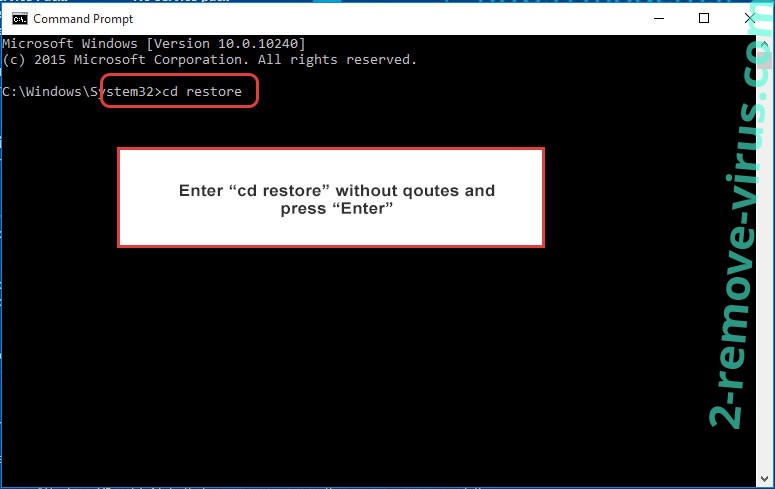
- Type in rstrui.exe and press Enter.

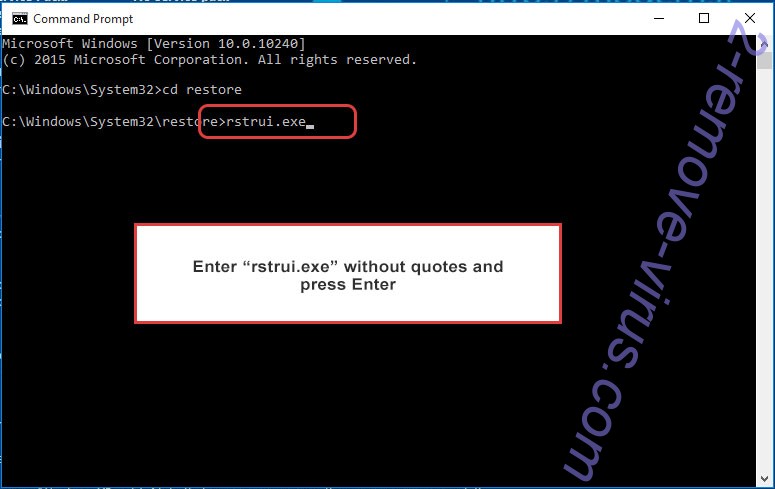
- Click Next in the new window and select the restore point prior to the infection.

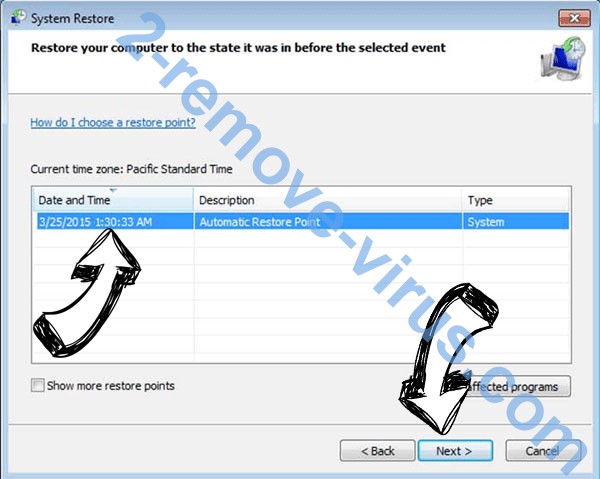
- Click Next again and click Yes to begin the system restore.

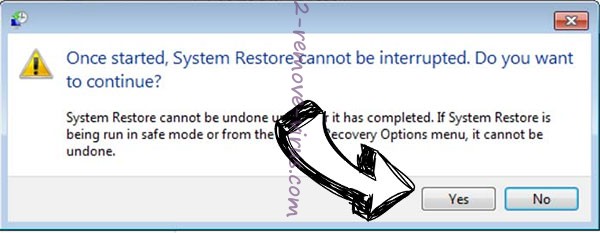
Delete FileEncrypted ransomware from Windows 8/Windows 10
- Click the Power button on the Windows login screen.
- Press and hold Shift and click Restart.


- Choose Troubleshoot and go to Advanced options.
- Select Command Prompt and click Restart.

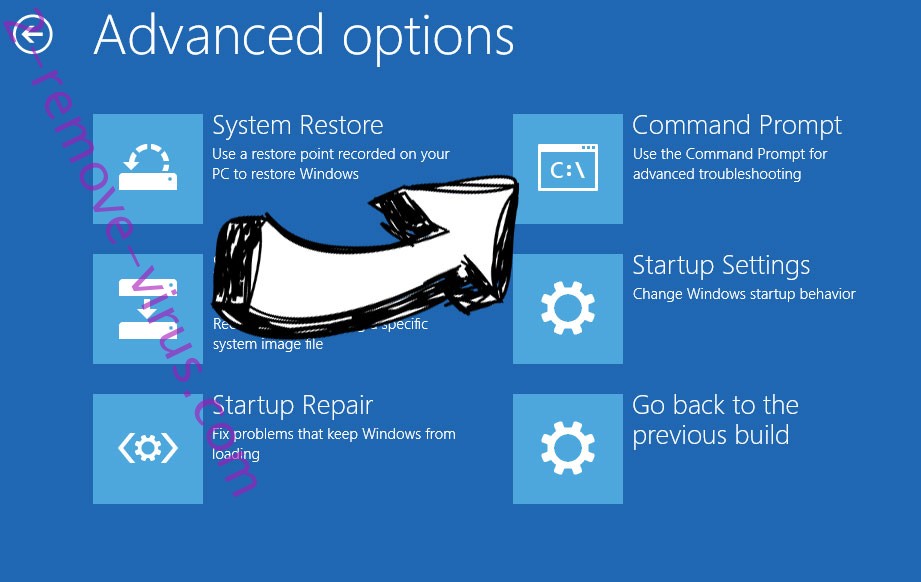
- In Command Prompt, input cd restore and tap Enter.


- Type in rstrui.exe and tap Enter again.


- Click Next in the new System Restore window.

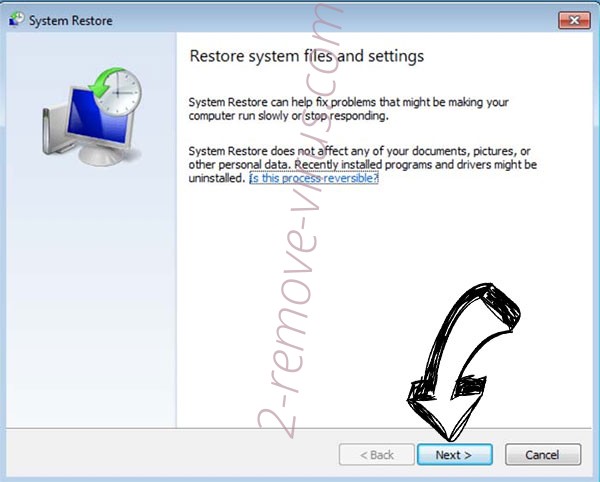
- Choose the restore point prior to the infection.


- Click Next and then click Yes to restore your system.


Site Disclaimer
2-remove-virus.com is not sponsored, owned, affiliated, or linked to malware developers or distributors that are referenced in this article. The article does not promote or endorse any type of malware. We aim at providing useful information that will help computer users to detect and eliminate the unwanted malicious programs from their computers. This can be done manually by following the instructions presented in the article or automatically by implementing the suggested anti-malware tools.
The article is only meant to be used for educational purposes. If you follow the instructions given in the article, you agree to be contracted by the disclaimer. We do not guarantee that the artcile will present you with a solution that removes the malign threats completely. Malware changes constantly, which is why, in some cases, it may be difficult to clean the computer fully by using only the manual removal instructions.
